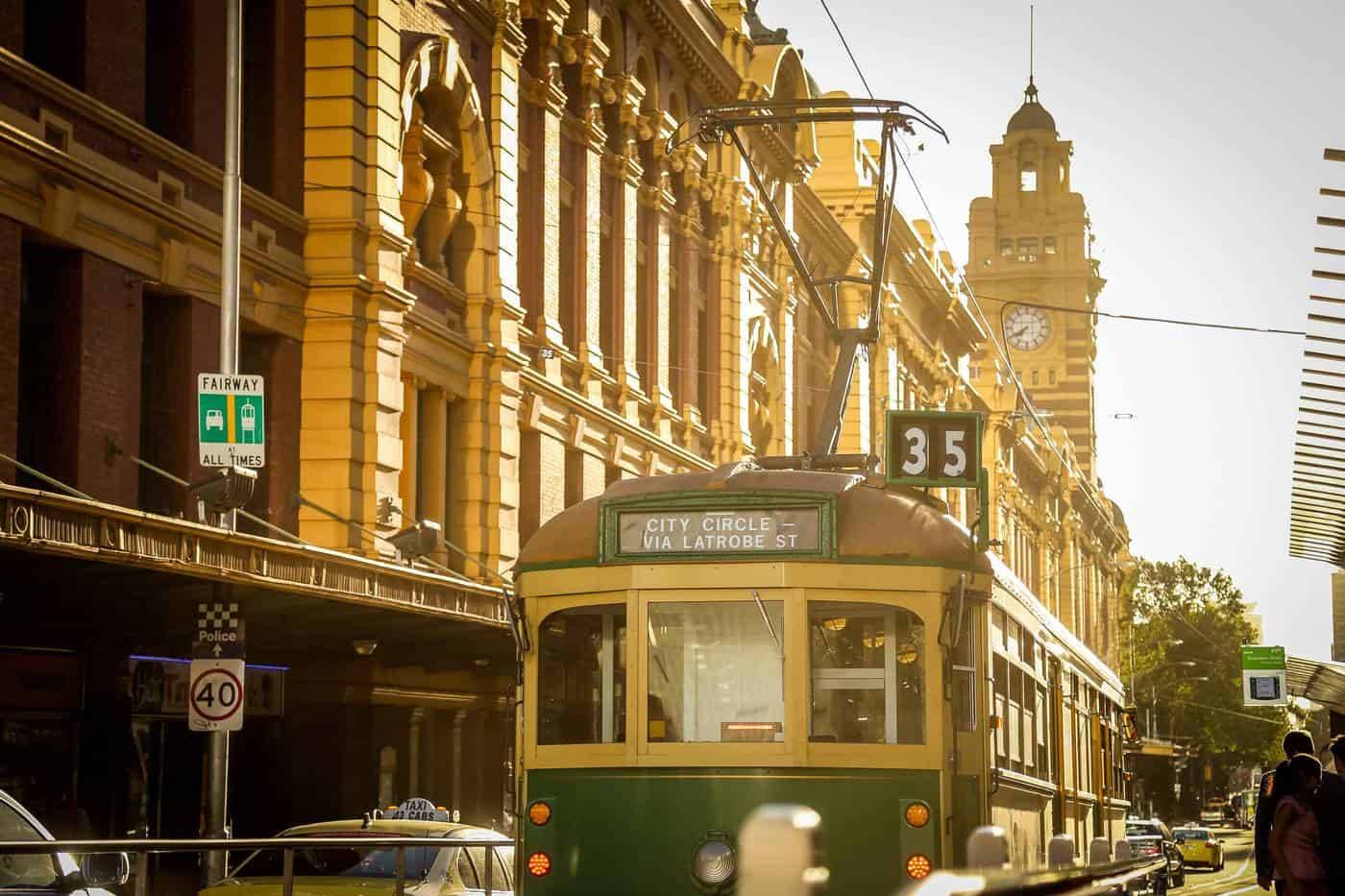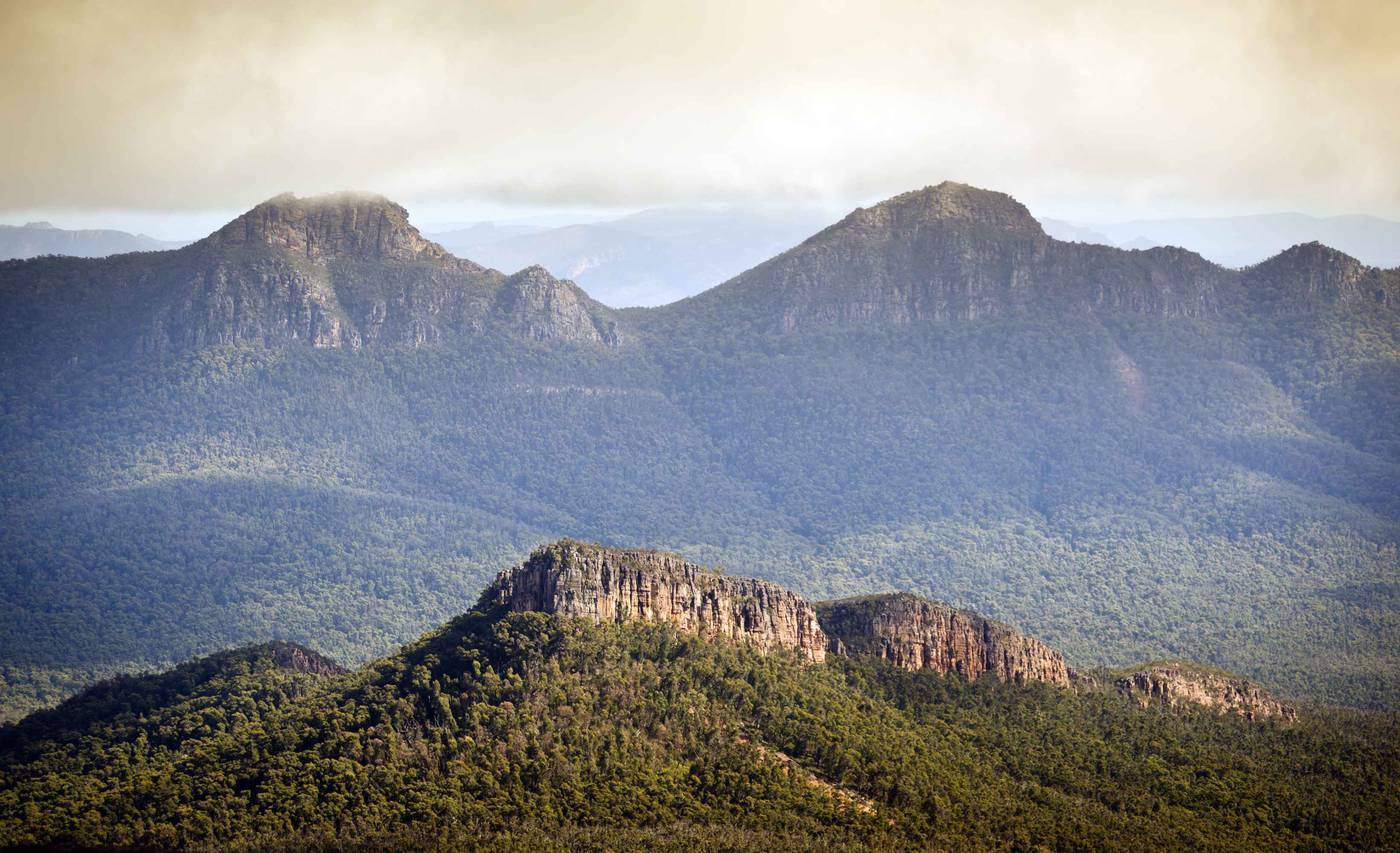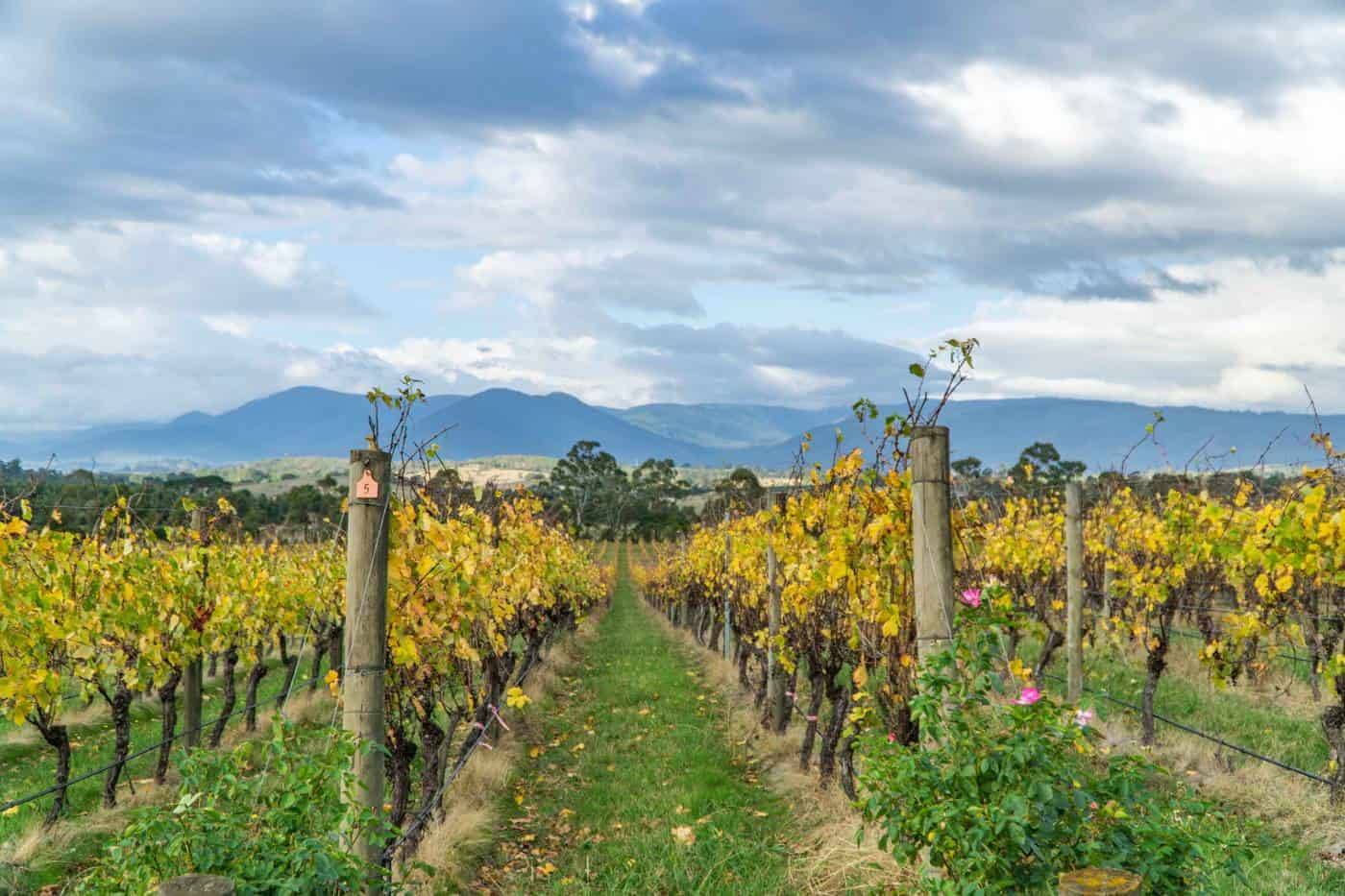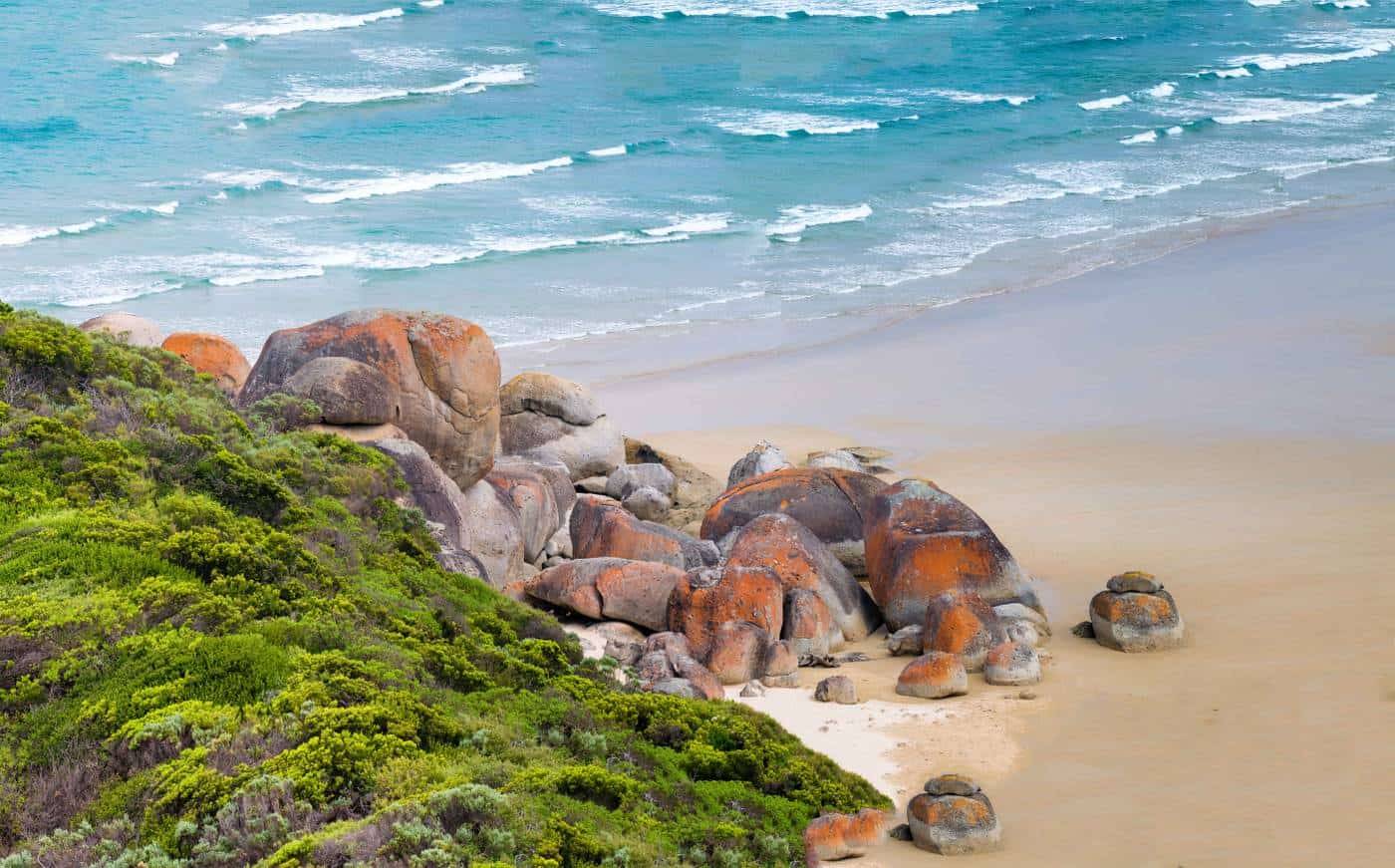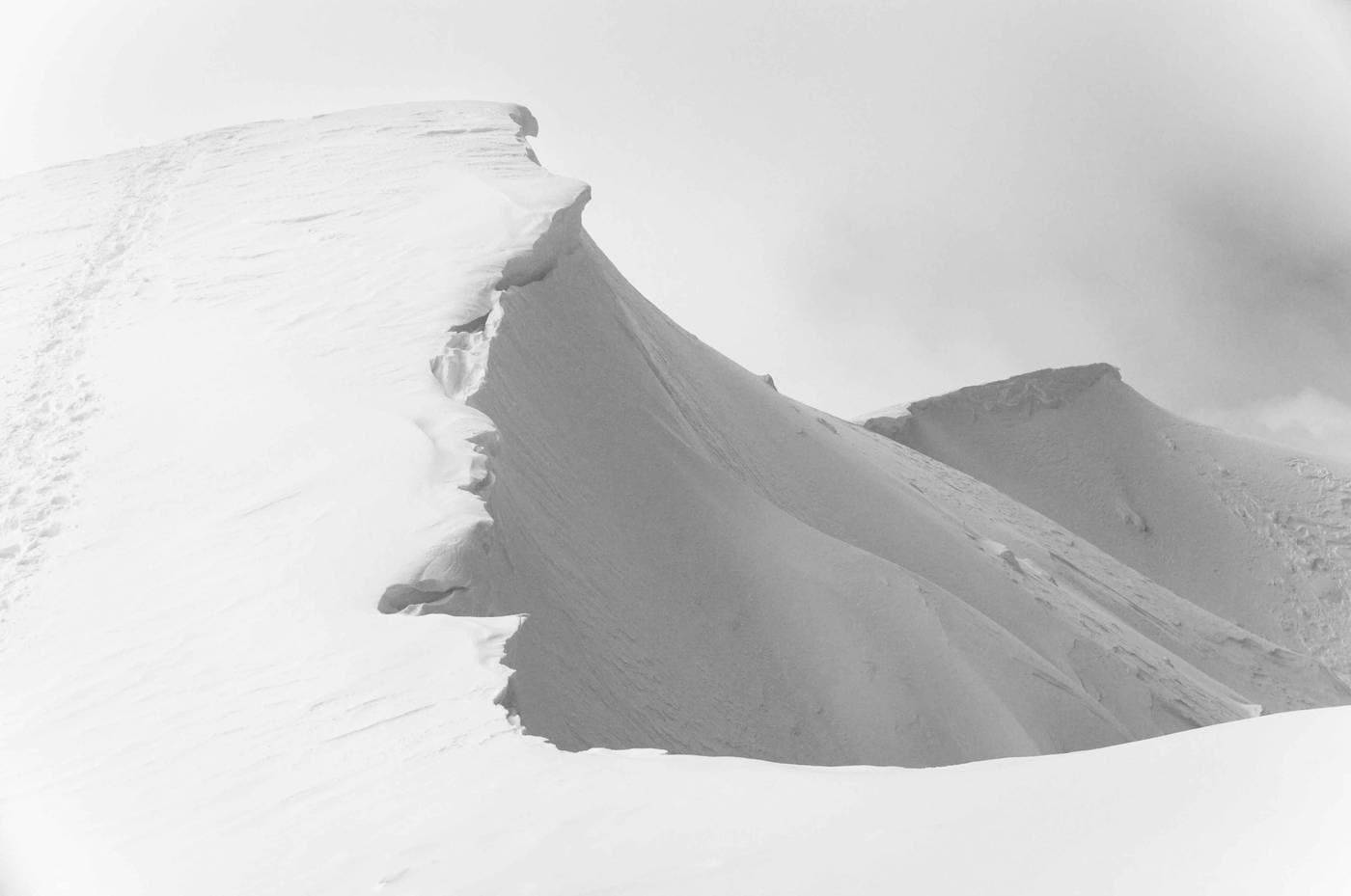
VICTORIAN SNOWFIELDS GUIDE
The Alpine National Park adjoins the Snowy Mountain at the border with New South Wales where it meets its big brother Kosciuszko National Park. It consists of several smaller protected parks and reserves, including the Alpine National Park, Mt Buffalo National Park, Baw Baw National Park and Yarra Ranges National Park. These four reserves are homes to the only ski resorts and ski fields in Victoria.

ALPINE NATIONAL PARK
The highest point in the Alpine National Park is Mount Bogong (1986 m). Sitting amidst the Bogong High Plains, it is defined by vast subalpine grassland and woodland. The mountain is towering over the Kiewa River Valley – a place of a great significance for the Aboriginal people.
On the southern fall of the Alps, the vegetation turns into a lush forest and tall greenwood with a dense canopy and abundant wildlife. The typical Australian eucalyptus, reaching far into the horizon, is home to boundless birdlife and unique species.
The area is known for winter sports, such as downhill, cross country, and backcountry skiing, while summertime brings great opportunities for hiking, climbing and mountain biking.
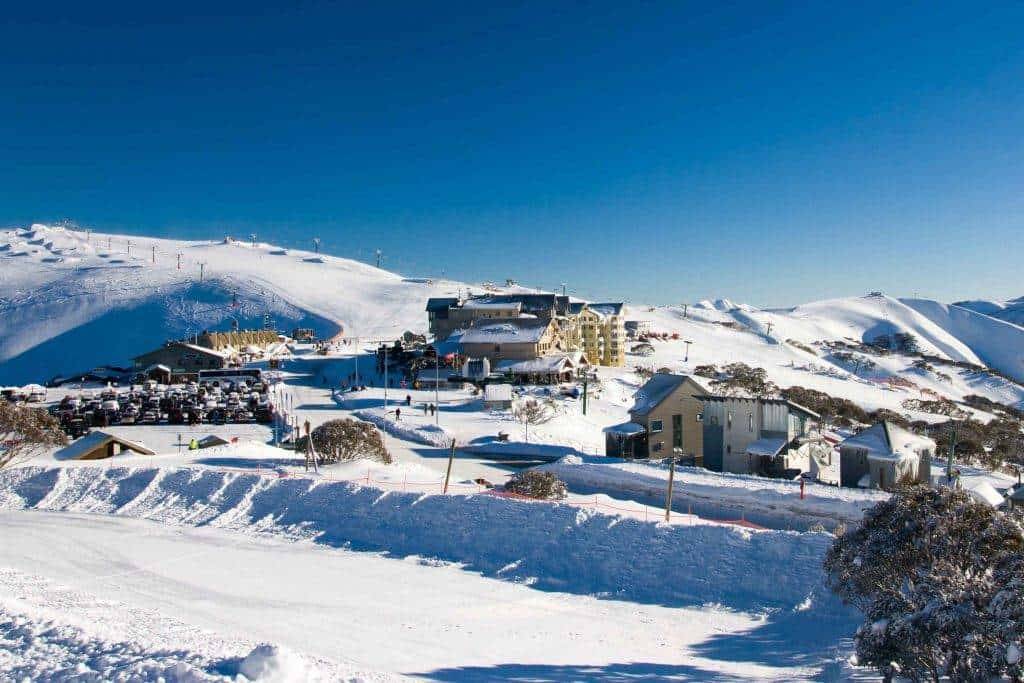
MAJOR RESORT TOWNS IN THE ALPINE NATIONAL PARK
- Mount Buller is the favourite winter resort town for the Victorians, and the prices often reflect it. There are many attractions, tours, events and activities available, mostly during the wintertime. In summer the area gets quiet, and it is ideal for walking, hiking, and cycling
- Mount Beauty is a tiny village and the gateway to the Falls Creek ski resort, similarly to Mt Buller, busy in winter but offering great hiking trails and golfing in summer
- Mount Hotham has a small alpine resort as well, active mainly in winter but there are some summer activities to do like mountain biking and trekking
- Dinner Plain is a thriving all year round resort with one winter ski tow and a wide range of summer activities such as bushwalking, horse riding, mountain biking and tennis
- Lake Mountain – the alpine resort is a popular cross-country ski destination for families and casual visitors with good facilities and winter attractions (Yarra Ranges)
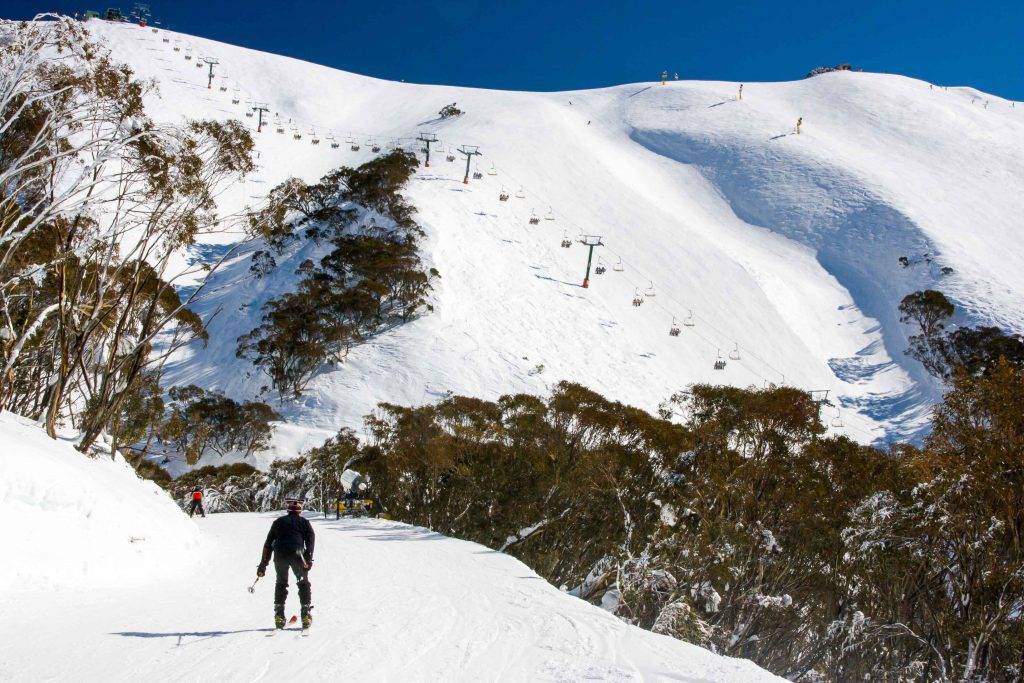
WHAT TO DO IN THE ALPINE NATIONAL PARK IN WINTER
- DOWNHILL SKI FIELDS (SKI RESORTS): Mount Hotham, Falls Creek/Mt Beauty, Mount Buller, Mount Baw Baw, Dinner Plain
- CROSS COUNTRY SKIING SNOWFIELDS: Falls Creek (Australia`s home of cross country skiing), Mount Buffalo, Mount Donna Buang, Mount Stirling, Lake Mountain, Mount St Gwinear, Mt Baw Baw
- BACK BACKCOUNTRY SKIING AREAS: Mount Bogong, Mount Feathertop, Mount Buffalo, Mount Stirling, Mount Howitt
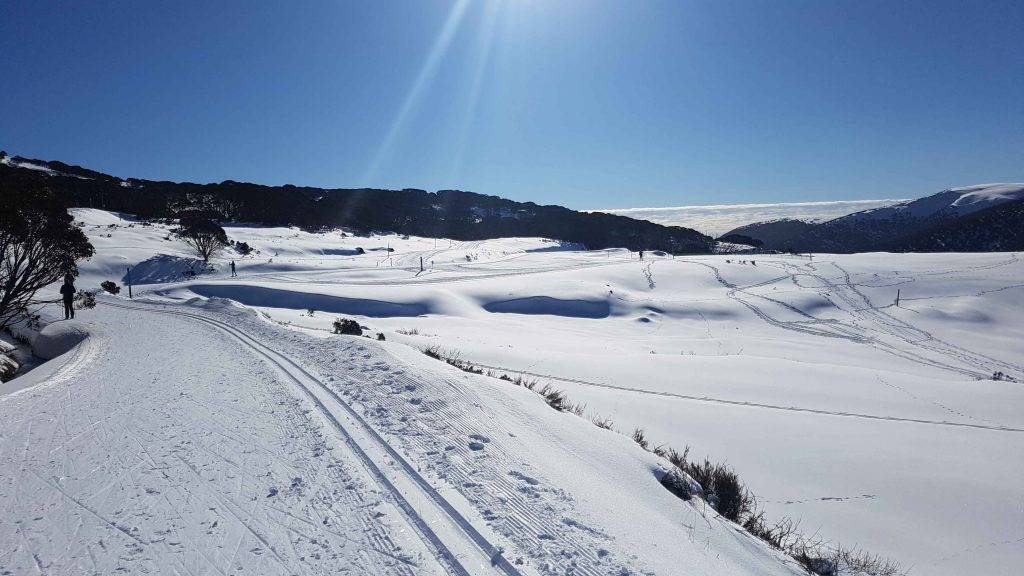
WHAT TO DO IN THE ALPINE NATIONAL PARK IN SUMMER
- MOUNTAIN BIKING – the park has a large network of cycling and mountain bike trails, including the Dalatite River Trail, Alpine Epic Trail, Historic Huts Loop, Stonefly, Big Hill Bike Trail, Aqueduct Trail, Beechworth Bike Trail
- CAMPING & SWIMMING – there are wonderful camping, forest walking and relaxing spots by lakes and rivers throughout the whole park perfect for families and outdoor lovers, e.g., Lake Catani, Lake Cobbler, Lake Dartmouth, Lake Hume, Thomson Dam, Lake Eildon
- WALKING & HIKING – see THE YARRA RANGES & ALPINE NP WALKING TRACKS

MT BUFFALO NATIONAL PARK
Mount Buffalo National Park is known for impressive cliffs, dramatic granite tors, tumbling waterfalls, snow gums and gorgeous wildflowers. The park features myriads of walking tracks, panoramic scenery, wild rivers and in summer it is the ultimate destination for adventurous pursuits such as abseiling, rock climbing and hang-gliding.
Winter turns the park into the snowy wonderland, and many adrenaline seekers come to take pleasure in cross-country skiing, particularly near the Cathedral (Cresta Run), Dingo Dell and Cresta Valley.
The town of Bright is the gateway and the main resort in the area with good accommodation options all year round. Lake Catani is ideal for camping, kayaking, canoeing, fishing, and swimming.

ESSENTIAL EXPERIENCES IN MT BUFFALO NATIONAL PARK
- Cross-country skiing – an excellent, well-marked network of cross-country trails are available in wintertime (Cathedral, Dingo Dell, and Cresta Valley)
- Tobogganing – perfect for children and families in winter
- Lake Catani – camping, picnics, boating, fishing, swimming, kayaking, canoeing
- The Horn Lookout & Gorge Heritage Walk – climb to the summit of Mt Buffalo (1723 m) and enjoy the breathtaking views (1 hr)
- Short walking tracks – View Point Nature Walk (2 hrs return), Eurobin Falls Track (45 min return), Rollasons Falls Track (1.5 hrs return), Lake Catani Track (1.5 hrs return), Underground River Track (1 hr return), Monolith Track (1-hour circuit). For more details and trekking options visit http://www.mtbuffaloresort.com.au/
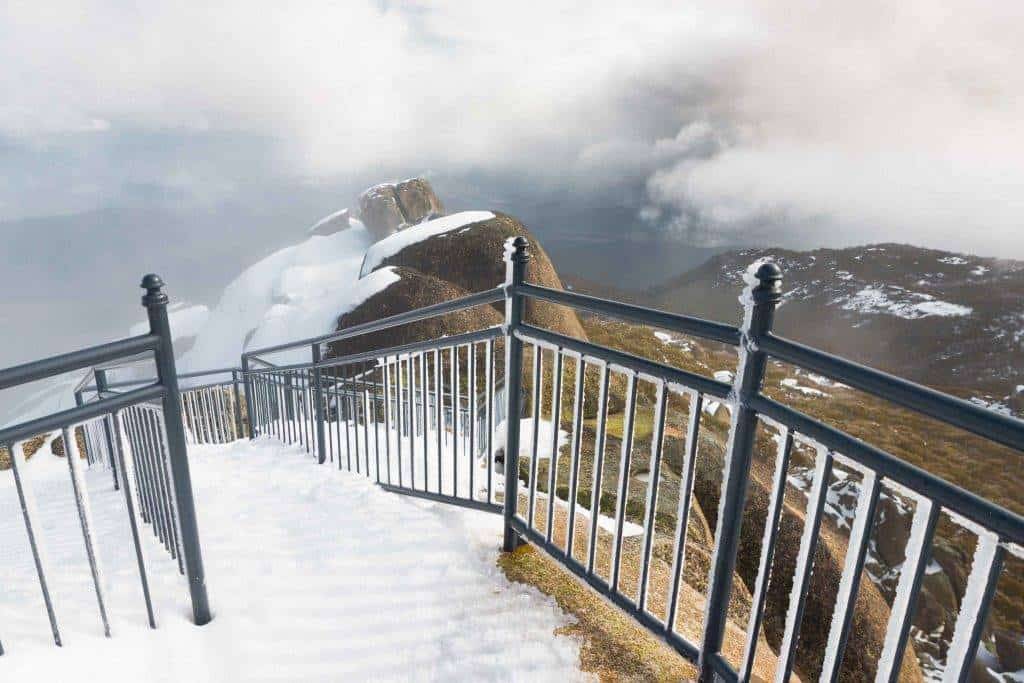
BAW BAW NATIONAL PARK
This small national park is situated it the southern part of the Victorian Alps, between the Central Highlands and Gippsland regions. Like the other parks, the major uses of the park are skiing in winter and bushwalking in summer. It is popular for cross-country skiing, downhill skiing, bushwalking, rafting and canoeing, fishing, scenic drives, and picnics. The highest peak in the park is Mount St Phillack (1566 m) in the Baw Baw Plateau.
The landscape is characteristic of grassland, plains, and woodland and Mount Erica and St Gwinear and Baw Baw Alpine Village are the bases for most of the walks. Thomson River and Dam offer great water activities, bushwalking, and camping.
The most famous is perhaps the Great Australian Alps Track, starting in Walhalla and extending 650 km across the to the Alpine National Park in Victoria, the Snowy Mountains in New South Wales and finishing in Canberra. It takes up to 8 weeks to complete the trail, but it is well-worth of the effort.

ESSENTIAL EXPERIENCES IN BAW BAW NATIONAL PARK
- Mountain biking – Two Towns Trail (8km), Rokeby-Neerim Trail (13km), Warragul-Yarragon Trail (35 km), Trafalgar Trails (40-60km)
- Camping – Thomson Dam
- Rafting – Thomson River
- Cross-country skiing – popular trail between Baw Baw Plateau between Mount Baw Baw, Mount Baw Baw Alpine Resort
- Walking tracks – Mt Baw Baw Summit Walk (2hrs return), Walhalla Goldfields Trail (14 km return), Mushroom Rocks, (2 hrs return), Mt Gwinear Track (2 hrs return) and many other short walks around the alpine resort
For more details and information visithttp://www.visitbawbaw.com.au/walking-cycling
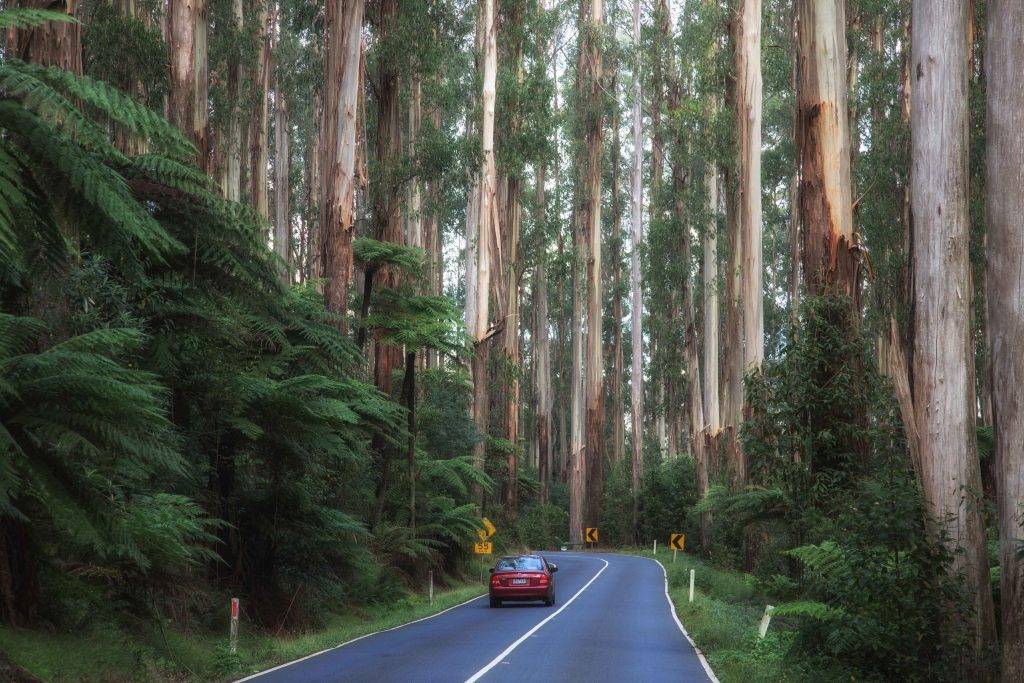
TRAVEL TIP
The best way to explore the national park is self-drive (summertime only) via the Great Alpine Circuit as follows:
Melbourne-Dandenong Ranges (Belgrave)-Yarra Valley (Healesville)-Yarra Ranges (Warburton)-Baw Baw-Marysville-Eildon-Alexandra-Mansfield-Mt Buller-Myrtleford-Mt Buffalo NP(Bright)-Mt Hotham-Dinner Plain-Falls Creek (Mt Beauty)-Mt Bogong-Glen Valley-Lake Dartmouth (Mitta Mitta)-Tallangatta Lake-Colac Colac-Dartmouth-Omeo-Bairnsdale-Melbourne
NOTE We recommend renting a 4WD this road trip (especially if driving in wintertime) for even if the roads are well-maintained and most of them are sealed. Although the distances are not long allowed extra time for each section due to winding roads and lots of shortstops on the way. Also, snow chains are essential if travelling in winter.
Suggested time for the journey is 5-7 days.
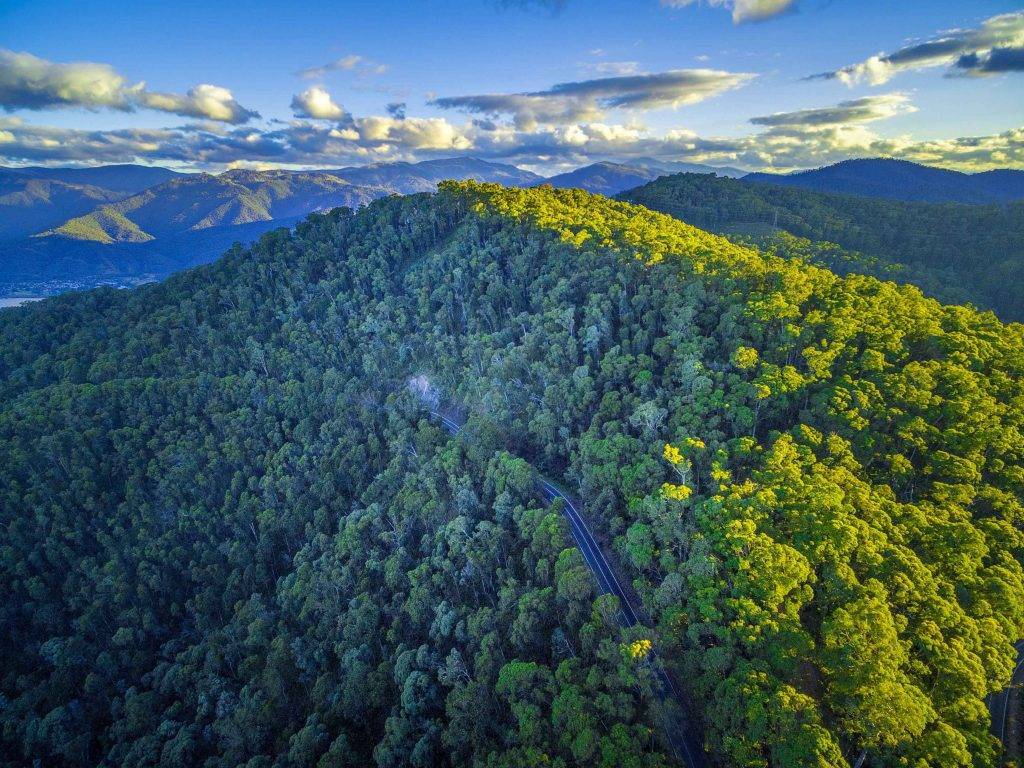
WHEN TO TRAVEL
- Summer (Hiking and Mountain Biking) – the summer season in the Alpine National Park usually runs from November till May
- Winter (Ski Season) – most of the ski fields in the Alpine National Park operate between the end of June and beginning of September, depending on the weather conditions. Generally, the best time for skiing and snowboarding is July-August
NOTE The resorts get extremely busy during the winter school holidays (June-July), and accommodation should be a book in advance
HOW TO GET THERE
Fly to Melbourne. Hire a 4WD vehicle and drive to the Alpine National Park.
For all flights visit www.momondo.com or www.skyscanner.com
